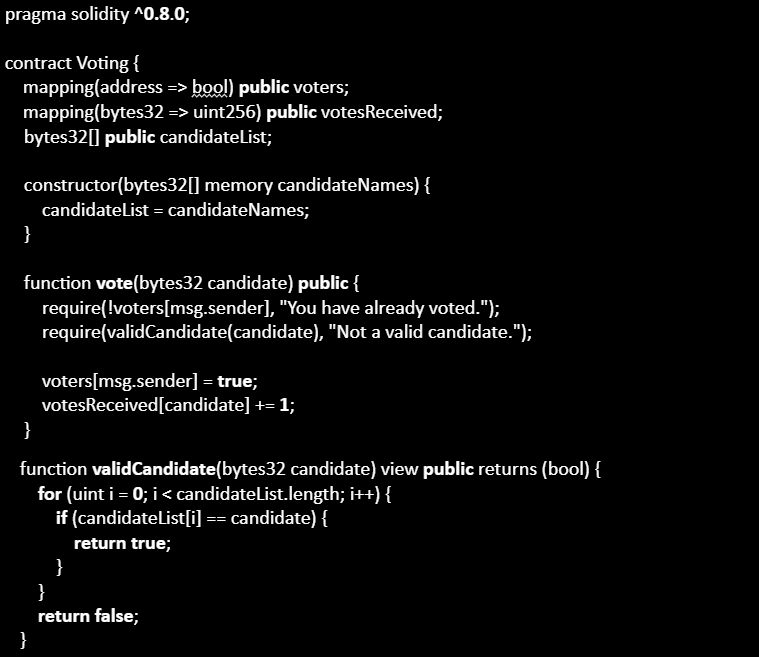
Over the past decade, the blockchain ecosystem has gained popularity, resulting in its rapid evolution. Well, thanks to groundbreaking technologies and programming languages designed to harness the power of decentralized applications (dApps). Among these, Solidity stands out as one of the most pivotal languages in the world of smart contracts. As a seasoned blockchain enthusiast, you would definitely be introduced to Solidity. This high-level programming language used to develop innovative smart contracts has changed the blockchain landscape forever.
As your premier blockchain-related guide, ‘The Blockchainist’ has dedicated a comprehensive blog post to the Solidity language. Whether you’re a seasoned blockchain enthusiast or a curious beginner, this blog post offers valuable knowledge about Solidity.
So, without further ado, let’s jump straight to this blog post, which discusses the history of Solidity and its features. We have also provided practical examples to help you understand its significance and application.
Table of Contents
1. Introduction to Solidity
2. History of Solidity
3. Key Features of Solidity
4. Basic Syntax and Structure
5. Solidity Data Types
6. Writing Smart Contracts
7. Solidity Functions
8. Example Contracts
9. Security Considerations
10. Conclusion
Introduction to Solidity
Solidity is a high-level, statically-typed programming language designed specifically for developing smart contracts that run on the Ethereum Virtual Machine (EVM). It allows developers to write code that manages the state and execution of smart contracts, which are self-executing contracts with the terms of the agreement written into code. Solidity was developed to address the need for a language that could effectively implement smart contracts on the Ethereum blockchain, providing a robust framework for decentralized applications.
History of Solidity
Solidity was first proposed by Dr. Gavin Wood, one of Ethereum’s co-founders, in 2014. Its development has been an iterative process, with the language evolving to incorporate new features and improvements over time. Initially influenced by languages such as JavaScript, Python, and C++, Solidity has grown to become the primary language for Ethereum smart contract development. The Solidity team continuously updates the language to improve functionality, security, and efficiency.
Key Features of Solidity
1. Static Typing
Solidity is a statically-typed language, meaning that the type of each variable must be specified at compile time. This helps in detecting errors early in the development process and provides better optimization opportunities.
2. Contract-Oriented
The language is designed around the concept of contracts. A contract in Solidity is a collection of code (functions) and data (state variables) that resides at a specific address on the Ethereum blockchain.
3. Inheritance
Solidity supports inheritance, allowing developers to create new smart contracts based on existing ones. This feature promotes code reuse and modular design.
4. Libraries
Libraries in Solidity provide a way to group reusable code that can be called by smart contracts. This helps in reducing gas costs and improving code efficiency.
5. Interfaces and Abstract Contracts
Solidity allows the definition of interfaces and abstract contracts, enabling developers to create more flexible and modular code. Interfaces define function signatures without implementing them, while abstract contracts provide partial implementations that must be completed by derived contracts.
Basic Syntax and Structure
To get started with Solidity, it’s important to understand its basic syntax and structure. Here is a simple overview:
Contract Definition
A Solidity contract is defined using the `contract` keyword. Here is a basic example:

Pragmas
The `pragma` keyword indicates the specification of the compiler version. It ensures that the code is compiled with the specified version of Solidity.
Visibility
Functions and state variables can have different visibility levels:
– `public`: Accessible by anyone.
– `external`: Only accessible from other contracts and transactions.
– `internal`: Accessible only within the contract and derived contracts.
– `private`: Accessible only within the contract.
Solidity Data Types
Solidity provides several data types that are crucial for developing smart contracts:
1. Value types include:
Value types include:
– `uint`: Unsigned integers of various sizes (`uint8`, `uint16`, `uint32`, etc.).
– `int`: Signed integers (`int8`, `int16`, `int32`, etc.).
– `bool`: Boolean values (`true` or `false`).
– `address`: Ethereum addresses.
– `bytes`: Dynamic byte arrays.
2. Reference Types
Reference types include:
– `string`: Dynamic strings.
– `array`: Fixed-size and dynamic-size arrays.
– `mapping`: Key-value pairs.
Writing Smart Contracts
Here’s a more detailed example of a smart contract:

1. Constructor
The `constructor` function is used to initialize the contract state. It runs only once when the contract is deployed.
2. State Variables and Functions
State variables hold the contract’s state, while functions define the contract’s behavior. The `vote` function updates the state, while `validCandidate` checks the validity of the candidate.
Solidity Functions
Functions in Solidity can be categorized into:
1. View and Pure Functions
– `view`: Functions that read the state but do not modify it.
– `pure`: Functions that neither read nor modify the state.
Example:

2. Modifiers
Modifiers are used to change the behavior of functions. They can be used to add preconditions, such as access control or validation.
Example:

Example Contracts
Token Contract
Here’s a simple ERC-20 token contract:


Security Considerations
Writing secure smart contracts is crucial due to their irreversible nature. Some common security considerations include:
1. Reentrancy Attacks
Ensure that functions interacting with external contracts are protected against reentrancy attacks by using the Checks-Effects-Interactions pattern.
2. Integer Overflow and Underflow
Use the SafeMath library to avoid integer overflow and underflow issues.
3. Access Control
Implement proper access control to restrict sensitive functions to authorized users only.
4. Denial of Service (DoS)
Avoid DoS attacks by not relying on external contracts for critical functionality and validating inputs thoroughly.
Conclusion
Solidity is a powerful programming language that underpins the creation of smart contracts on the Ethereum blockchain. Its design focuses on providing developers with the tools to create decentralized applications that are secure, efficient, and modular. By understanding its syntax, features, and best practices, developers can harness the full potential of Solidity to build innovative solutions in the blockchain space.
Whether you’re new to blockchain development or an experienced coder looking to explore smart contracts, mastering Solidity is a crucial step in leveraging the power of decentralized technology.
Stay tuned for more such blog posts!
Frequently Asked Questions (FAQs)
Q-1. What is Solidity, and why is it important for blockchain development?
Ans: Solidity is a high-level, statically-typed programming language specifically designed for writing smart contracts that run on the Ethereum Virtual Machine (EVM). It plays a crucial role in blockchain development because it enables developers to create decentralized applications (dApps) and automated, self-executing contracts with the terms directly embedded in code. Solidity’s importance stems from its ability to facilitate transparent, tamper-proof, and efficient transactions without the need for intermediaries, driving the functionality of decentralized finance (DeFi) and other blockchain-based innovations.
Q-2. How do you deploy a smart contract written in Solidity?
Ans: Deploying a smart contract written in Solidity involves several steps:
1. Write the Contract: Create your smart contract using the Solidity programming language. Use tools like Remix, a browser-based IDE, to write and test your contract.
2. Compile the Contract: Use the Solidity compiler (solc) to compile your contract into bytecode and an ABI (Application Binary Interface).
3. Deploy to the Blockchain:
– If using Remix, you can deploy directly to the Ethereum testnet or mainnet through the IDE.
– Alternatively, you can use a development framework like Truffle or Hardhat. Connect to an Ethereum node (e.g., Infura or a local Ganache instance).
– Use Web3.js (JavaScript library) or Ethers.js to interact with the Ethereum blockchain. Create a transaction that includes the compiled bytecode and send it to the network using your Ethereum account’s private key.
4. Verify Deployment: Once the transaction is mined, the contract will have a unique address on the Ethereum blockchain. You can interact with it using this address and the ABI.
Q-3. What are some best practices for writing secure Solidity smart contracts?
Ans: Writing secure Solidity smart contracts is essential due to their immutable and transparent nature. Here are some best practices:
1. Use the Latest Compiler Version: Always specify the latest stable version of the Solidity compiler to benefit from the latest security updates and features.
2. Avoid Reentrancy Attacks: Implement the Checks-Effects-Interactions pattern to prevent reentrancy attacks. Use the `ReentrancyGuard` contract from OpenZeppelin for additional safety.
3. Use SafeMath for Arithmetic Operations: Prevent integer overflow and underflow by using the SafeMath library.
4. Implement Access Control: Use modifiers and access control mechanisms to restrict sensitive functions to authorized users only.
5. Avoid Floating Pragma: Avoid floating pragma statements as they can lead to different compiler versions being used, potentially introducing inconsistencies and vulnerabilities.
6. Thorough Testing and Auditing: Perform rigorous testing of your smart contracts and consider getting them audited by professional security firms to identify and fix potential vulnerabilities before deployment.






